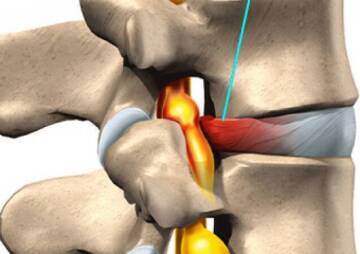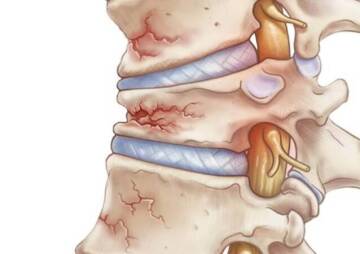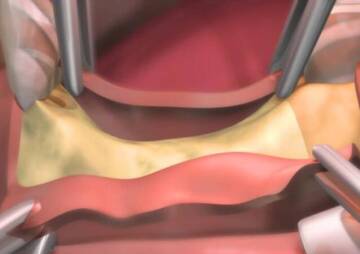-
Category
Craniomaxillofacial Surgery
Orthopedic Surgery
Spine Surgery
Orthopedic Implants
Hip Surgery
Knee Surgery
Pectus Excavatum
Bone Graft
Disinfectants
Healthcare
Cervical Spine Surgery Complications You Should Know About Them

Complications occur in all types of surgeries, but vary from type to type. In the case of cervical spine injury, the complications occur as the surgery is done near the spine and there is no guarantee that the patient will recover after the first surgery.
Complications occur in all types of surgeries, but vary from type to type. In the case of cervical spine injury, the complications occur as the surgery is done near the spine and there is no guarantee that the patient will recover after the first surgery. The chances of the patient undergoing surgeries after the first surgery is very high. Risks like getting paralysis, losing bowl control, not being able to feel the legs and walk are also some of the common complications.
Another form of complications is anesthetics complications, where the patient may show reactions to the drug. Most spinal surgeries require the patient to take the general anesthesia that sends them to sleep throughout the surgery, while with the help of special machines they can breathe. Lung problems will not occur if the patient is taken good care of after the surgery. Lack of lung exercise after the surgery can lead to poor blood oxygen and develop infection in the lungs, the case which is called pneumonia.
Infections occur in almost all the surgeries if the wounds are not cleaned properly, and are not taken good care of. If the wound turns red and swells up, the patient needs to inform the doctor as soon as possible as these are the symptoms of an infected wound. With increase of the infection in the wound, the pain also increases and the wound may ooze yellow pus. Such infections can be treated with the help of antibiotics as well as removal of the stitches from the skin. In some patients there are allergic reactions to the antibiotics as well, so if you are one of them, do let your doctor know immediately about the reactions.
The most important cervical spine surgery complication is the injury caused to the spinal cord. Any time the spine is operated, there are high chances of the spine getting serious injuries. As we know, the spine has a lot of nerves that are connected to the brain. During the surgery, if any of the nerves get damaged the person might get paralyzed and the brain will not get information through the nerves from the spine anymore. The spinal cord is the back bone of the human life, the injuries caused to it do not heal fast, and there might be a persistent pain even after the surgery. If the pain is beyond control, then you need to contact your doctor as soon as possible.
Neck Surgery Complications
Neck surgery is often known as last resort option after conservative treatments fail to reduce the neck pain. Neck surgery holds its own complications and the doctors explain the risks and side effects of the neck surgery before advising the patient to undergo the surgery. The complications include bleeding, infections, injury to the nervous system of the spinal cord, leakage of the spinal fluid from cerebral, pain and stiffness of the neck after the surgery, and other complications associated with the surgery being performed at the front or the back of the neck. Neck surgery is not always the best solution to treat neck pain. In most cases, it is recommended only when the invasive treatments were of no use.
Cervical Spine Surgery Risks
Risks that are associated with spine surgery are to be taken seriously by the patient as well as the doctor. The patient may face blood clots after the surgery and it may develop inside the vein of the patient’s legs. Post-surgery, the mechanism of body’s clotting is active as it is trying to stop the bleeding caused by the surgery. Clotting happens around the surgical site. A tear in the Dural occurs when the thin protection covering the spinal cord and the nerves is damaged during the surgical procedure. However, most Dural tears tend to heal without incident.
To be noted, if you are having headaches after the surgery, tell your doctor as you may need to undergo a second surgery to fix the Dural tear. Signs you need to be aware of and tell your doctor are redness and swelling in the area of the wound, increase in the pain, fever, and smell at the site of the wound.
Types of Surgery for Neck
There are few neck surgeries that depend on several factors, which include the reason for the patient’s current condition, the doctor’s recommendation, and the personal preference of the patient.
Cervical Spine Fusion
Two of the vertebrae are joined into a single one with the help of the cervical fusion. It is used when the portion of the neck is unstable or the motion at the end of the affected area causes pain. To hold two vertebrae, metal orthopedic screws and plates are also used.
Anterior Cervical Discectomy and Fusion ACDF
This type of surgery is done to treat pinched nerve or compression in spinal cord. In this type of surgery, the incision is made in the front of the neck and the disk or the bone causing pain to the patient is removed. In order to give stability to the area, spine fusion is performed.
Anterior Cervical Corpectomy and Fusion ACCF
This surgery is similar to the ACDF surgery and is done to treat the compression in the spinal cord. In the process, like in ACDF, the incision is done at the front of the neck, but here, the disk is not removed. The part of the vertebrae from the front and any bone spurs from the surrounding is removed. The space which is left is filled with small pieces of bone and spine fusion, and this process needs a longer recovery time.
Laminectomy
The surgery is responsible for removing the bony area located in the spinal cord, which is called lamina. The purpose is to relieve the pressure from the spinal cord and nerves. Here, the incision is done at the back of the neck and then the bony area at the back of the vertebrae is removed. With the help of the process of removing, a laminectomy allows enough space for the spinal cord. Normally, people who had laminectomy also had spinal fusion. The laminectomy surgery has four types, namely, cervical laminectomy, lumbar laminectomy, sacral laminectomy, and thoracis laminectomy.
Laminoplasty
This surgical procedure has been evolved as an alternative to the cervical laminectomy. The term “laminoplasty” simply means “to generate a hinge to lift the lamina.” The process of making the incision at the back of the neck is similar to the laminectomy process. Here, the surgeon makes a door-like hinge instead of removing the lamina. They use the hinge in order to open the lamina and reduce the compression on the spinal cord. To keep the hinges in the place, metal implants are used. The advantage of this surgery is that it allows certain range of movements, but if the motion causes neck pain, then this surgery is not recommended.
Surgical Approaches to the Cervical Spine
The cervical surgery is an applied anatomy, where the surgery is not done regularly and the patient can get worse and even get paralyzed, in case the doctor chooses the wrong process or makes mistakes during the surgery. There are three types of approaches:
- Anterior approach: Here, as the name suggests, the spine is accessed from the front of the body and goes right through the abdomen of the patient.
- Posterior approach: In this case, the incision is made in the back of the patient.
- Lateral approach: The access to the spine is made from the sides of the patient, in this method. But which one holds a higher risk?
Most Risky Approaches
The riskiest approaches among these three are the anterior approach and the posterior approach. As we read above, anterior approach has two types of ACDF and ACCF, and the incision is made from the front of the neck. In the case of posterior approach, the incision is made in the back. A slight mistake in the direction or depth of the incision can bring along serious risks for the patient.
Less risky approaches
In case of the lateral approach, the incision is made from the sides, holds lesser risks, and is safer compared to the other two approaches. Lateral approach is more often suggested. During any surgery, the safety matters more and both the surgeon and the patient go for an approach which is less risky than others, and in the case of spine surgery, the lateral approach proved to be less risky.
An elaborated and precise detail was given about the spine surgery, the complications and the approaches. We hope this content provided answers to all your questions and cleared all your doubts regarding the surgery of the cervical spine. Surgeries have risks, it is not the matter of where and when, it’s the matter of the type of the surgery the patient undergoes. When there are less risky approaches, its better take them than to risk it all.
References: healthline, spineuniverse, healthline






